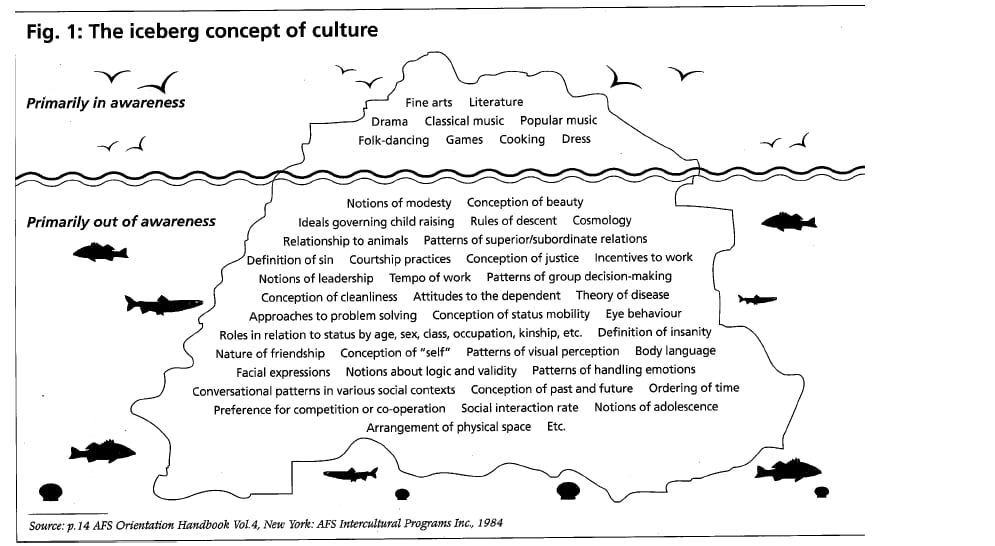Culture has many connotations and definitions and you might be surprised by the variety of ways your students think about culture. If you are thinking of using this e-portfolio or are planning to do any kind of cross-cultural experiential learning, it’s important that you and your students get on the same page about the meaning of the word “culture.” Establishing an academic definition of culture also challenges students to think more critically and inoculates against superficial ways of thinking and speaking about cultural differences.
How to get started? You can choose a definition and stick with it*, or develop your own working definition. If you develop your own definition, the class should consider different theoretical frameworks (anthropological, social, psychological, classical, etc.), contrast them with commonsense definitions, and agree on a definition the class will refer to throughout the activities. But at the very least provide a definition for the class to refer to throughout the activities.

This graphic of an iceberg shows the different aspects of culture, visible (above the water), and invisible (below the water). Iceberg, by Olga Berrios, Flickr, CC 2.0, https://www.flickr.com/photos/ofernandezberrios/2427741646
Recommended classroom activities for your “working definition” of culture:
Do a word cloud with Polleverywhere or another interactive tool in one of the first classes. Read and Discuss: ‘Culture’ from Keywords by Raymond Williams At the end of the semester, do another word cloud exercise and compare your results to the initial word cloud – how has our definition evolved? Reread article – new things appear more prominent in the second reading – share quotes you found significant. Reflect on how the class’s understanding of culture changed from the beginning of the program to the end. We found this worked really well and generated rich discussion.
If your class is directly focused on a particular country or culture you may want to dig even deeper into the meaning of culture and make a goal of your class to develop intercultural awareness. Here is a lesson for teaching your students a new way to think about culture and begin developing self-awareness regarding one’s own cultural background.
The key is to get your students thinking about how they think about culture. Feel free to be creative! Just don’t neglect this step. It is an important part of the learning for any class which seeks to develop students’ intercultural awareness and global competence.
Citation:
Gay, G. (2010). Culturally responsive teaching: Theory, research, and practice. New York; Teachers College.
*this could be as simple as “shared beliefs and values of a group of people.” This definition is brief but it focuses on aspects of “deep culture” – those things which can’t be seen but which drive culture as in the iceberg visualization of culture (see above). It’s important to emphasize deep culture in class discussions and to encourage students to consider underlying factors in their analyses.